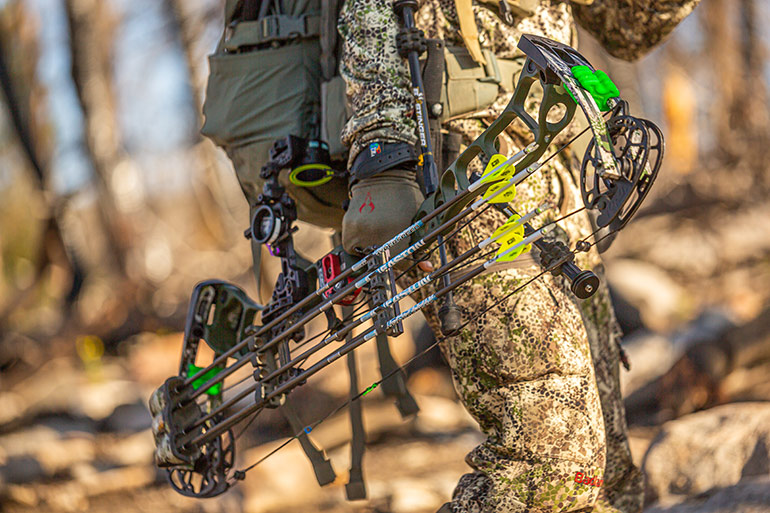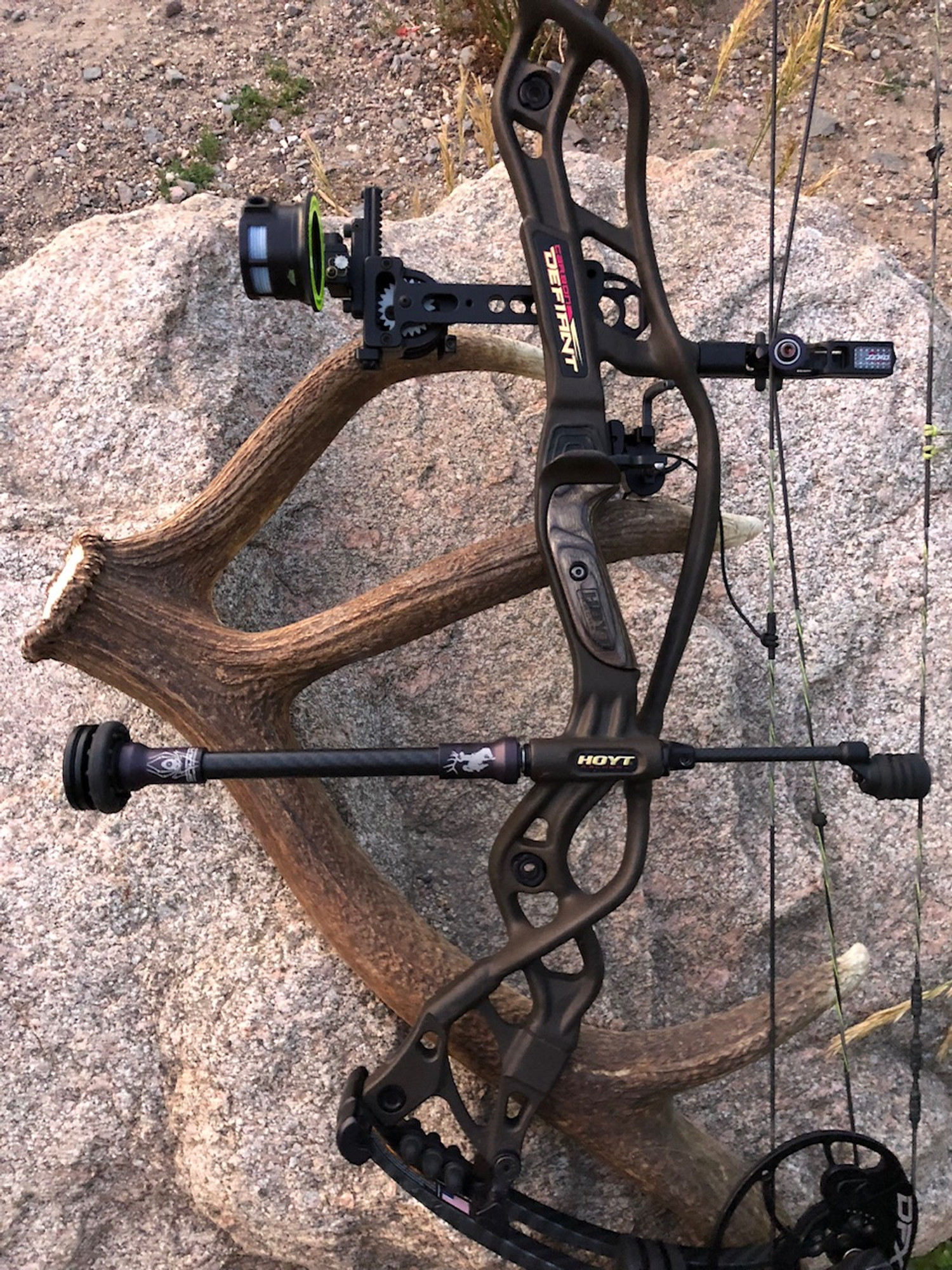Opening Precision: The Benefits of Using Archery Stabilizers
Opening Precision: The Benefits of Using Archery Stabilizers
Blog Article
The Ultimate Guide to Choosing the Right Archery Stabilizer for Enhanced Accuracy
Archery is a sporting activity that requires accuracy and precision, and choosing the best tools is essential for achieving optimal results. Among the numerous devices readily available, an archery stabilizer plays a significant function in boosting precision. With so numerous choices on the market, it can be frustrating to figure out which stabilizer is the right fit for your demands. In this detailed overview, we will check out the essential aspects to think about when selecting an archery stabilizer for enhanced accuracy. From locating the optimal length to recognizing the various designs and products, we will explore every little thing you require to recognize to make an informed choice. Whether you are a skilled archer looking to update your tools or a newbie seeking guidance, join us on this trip as we unwind the secrets to picking the perfect archery stabilizer.
Size: Locating the Optimum Stabilizer Size
When picking an archery stabilizer for optimum efficiency,Figuring out the excellent stabilizer length is important. The size of a stabilizer straight affects the equilibrium, security, and precision of the bow. A stabilizer that is also long can make the bow feel top-heavy and tough to manage, while a stabilizer that is too short might not offer enough security and dampening of vibrations. Finding the ideal length calls for thinking about aspects such as the archer's shooting style, bow weight, and personal preference.
A longer stabilizer, usually ranging from 8 to 12 inches, can offer better security and minimize bow torque. This is specifically valuable for archers that fire with a high draw weight or those who tend to torque the bow throughout the shot. The included size aids to disperse the weight evenly and counterbalance any type of torque or motion.
On the various other hand, a shorter stabilizer, typically in between 4 to 7 inches, offers much more maneuverability and quicker response. It is favored by archers who shoot with a lower draw weight or those that require even more mobility, such as seekers or 3D shooters. The much shorter size enables easier movement with tight spaces and faster adjustments.
Inevitably, the optimal stabilizer size refers personal choice and shooting style. It is recommended to trying out different sizes and observe the impacts on stability and accuracy. Consulting with skilled archers or specialists can also supply beneficial insights and suggestions.
Weight: Establishing the Appropriate Stabilizer Weight
After considering the ideal stabilizer size, the next essential aspect to take into consideration when choosing an archery stabilizer is determining the appropriate stabilizer weight - archery stabilizer. The weight of the stabilizer plays a critical role in boosting accuracy and security during the shot
The weight of the stabilizer influences the equilibrium and control of the bow. A much heavier stabilizer can give enhanced stability and control, particularly for shooters with a tendency for unsteady hands or irregular shots. It aids to absorb the resonances and recoil generated by the bow, decreasing torque and lessening the effect on the arrowhead's trip.
On the other hand, a lighter stabilizer enables for a quicker and extra responsive bow. It can be advantageous for shooters who prioritize maneuverability and speed over stability. Lighter stabilizers likewise decrease tiredness during long shooting sessions or competitors.
To establish the appropriate stabilizer weight for your demands, it is essential to consider your shooting design, physical toughness, and bow setup. Trying out different weights and observing the impact on your capturing performance is key to discovering the excellent balance.
Eventually, the optimal stabilizer weight will differ for each specific archer. It is recommended to begin with a modest weight and make changes based on personal choice and capturing outcomes. Keep in mind, the goal is to attain a stable and controlled shot, while also keeping comfort and simplicity of usage.
Materials: Selecting the Right Materials for Longevity and Efficiency
When picking an archery stabilizer, it is critical to carefully consider the products utilized in its building to ensure resilience and optimize performance. The choice of materials can greatly impact the general quality and efficiency of the stabilizer.
Among one of the most frequently utilized materials for stabilizers is carbon fiber. Carbon fiber offers a high strength-to-weight proportion, making it light-weight yet extremely strong. This material lowers and takes in resonances bow torque, causing enhanced stability and precision. Additionally, carbon fiber stabilizers are resistant to temperature modifications and are much less most likely to warp or bend gradually.
One more preferred material for stabilizers is aluminum. Light weight aluminum stabilizers are understood for their longevity and rigidness. They supply excellent dampening capacities, minimizing the quantity of shock and vibration moved to the shooter's hand. Light weight aluminum stabilizers additionally use a vast array of modification choices, permitting archers to adjust the weight and size to suit their preferences.
Some stabilizers are constructed making use of a mix of products. A stabilizer might have a carbon fiber core wrapped in a light weight aluminum shell. This crossbreed layout incorporates the finest high qualities of both materials, supplying ideal stability, sturdiness, and efficiency.
Design: Comprehending the Different Stabilizer Layouts and Their Impacts
Taking into consideration the products utilized in archery stabilizers, it is vital to now explore the different designs of stabilizers and their respective results. The layout of an archery stabilizer plays an important function in improving accuracy and lowering vibration throughout the shot. There are several various layouts readily available on the market, each with its very own distinct attributes.

An additional prominent design is the side bar stabilizer. This layout involves connecting a brief rod to the side of the bow, parallel to the main long pole. Side bar stabilizers aid in reversing the weight of accessories, such as sights or quivers, and i thought about this give added security to the bow.
Some stabilizers include flexible weights. These stabilizers permit archers to fine-tune the equilibrium and feeling of their bows by including or removing weights. This attribute is especially beneficial for archers who prefer a specific weight distribution or desire to try out various arrangements.
Furthermore, some stabilizers include dampening modern technology to reduce resonance and sound. These stabilizers commonly have built-in dampeners or utilize materials that soak up resonances, causing a smoother and quieter shot.

Accessories: Exploring Extra Devices for Improved Stability
These accessories are made to function in combination with the archery stabilizer to provide an even higher level of security and precision. One such accessory is the V-bar or the side stabilizer mount.
Another device that can enhance security is a bow sling. A bow sling is a strap that affixes to the bow and permits the archer to maintain a relaxed grip on the bow manage without the concern of dropping it (archery stabilizer). This kicked back grasp helps to reduce muscle mass tension and permits a much more secure and consistent shot
In addition, a stabilizer weight system can be used to tweak the balance and stability of the bow. These weight systems normally contain little weights that can be added or eliminated from the stabilizer to adjust the balance point of the bow. By finding the optimum equilibrium factor, archers can achieve an extra stable and accurate shot.
Conclusion
In verdict, selecting the appropriate archery stabilizer entails thinking about factors such as size, weight, products, layout, and additional devices. The ideal stabilizer size and weight will depend on private preferences and shooting style.
Determining the suitable stabilizer size is essential when picking an archery stabilizer for optimal performance. A stabilizer that is also long can make the bow really feel top-heavy and challenging to control, while a stabilizer that is too short might not offer enough Extra resources security and dampening of vibrations - archery stabilizer.Taking right into account the products made use of in archery stabilizers, it is vital to currently dive into the various layouts of stabilizers and their particular effects. Side bar stabilizers aid in counteracting the weight of devices, such as quivers or views, and supply extra stability to the bow
These weight systems commonly consist of little weights that can be included or removed from the stabilizer to adjust the balance point of the bow.
Report this page